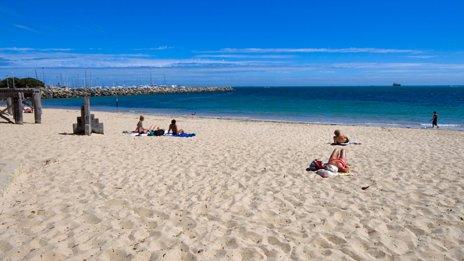A&E has 'worst week' in England
- Published
"I waited for about an hour and a half, it's not too bad but it could be have been a bit quicker"
Pressures in England's A&E units have hit record levels, with the lowest percentage of patients seen within four hours since monitoring began in 2010.
Data showed just under 90% of patients were seen within four hours in the seven days up to December 14.
Major units particularly struggled, with just six out of 140 meeting the target to see 95% within four hours.
Performance in Wales and Northern Ireland is even worse, while the picture in Scotland is unclear.

Get involved on:
As England is the only part of the UK that produces weekly data, how the NHS is performing there gives the best indication of the pressure the system is under.
Strain
Just over 440,000 patients visited A&E in the week ending 14 December with 89.8% seen within four hours.
As well as posting the worst performance against the four-hour target, other measures also show the service is under strain.
There were over 111,000 emergency admissions to hospital - 80,000 from A&E units - which is an all-time high.
Trolley waits - that is waits of four hours or more for a bed once a decision to admit a patient into hospital from A&E is made - topped 10,000 for the first time.
That compares to under 4,000 for the same week last year.
Delays getting patients out of hospital once they are ready for discharge are also much higher than average.

Dr Barbara Hakin, from NHS England, said the pressures were continuing to increase "significantly".
"We have admitted more people to hospital this week to take care of them than in any previous week on record. I want to pay tribute to the staff dealing with that - they are doing a brilliant job.
"While we are now below the extremely high waiting time standards that we set ourselves, the service we provide remains robust.
"The NHS's waiting times for urgent treatment are among the best for any major country that measures them.
"As we come into the holiday period, it is important people continue to look after themselves and nip problems in the bud.
"They should ensure they have proper medication, get their flu jab if they have not done so, and get advice from their pharmacist."
Patients' experiences
Megan Hill, from London, told the BBC about the contrasting experiences of both her grandmothers who fell and broke their hips within days of each other.
"Two London paramedics were forced to sit with my grandmother on a trolley for over eight hours, waiting for an available bed. The first time she was offered food was 01:00 on Wednesday morning - she fell on Tuesday morning.
"In a horrible coincidence, my other 86-year-old grandmother also fell and broke her hip just 48 hours earlier.
"She was picked up immediately by North Wales paramedics, seen and admitted the moment she arrived. Suffice to say she was also offered food.
"The level of patient care should not be postcode dependent."

Analysis: How bad is it going to get?
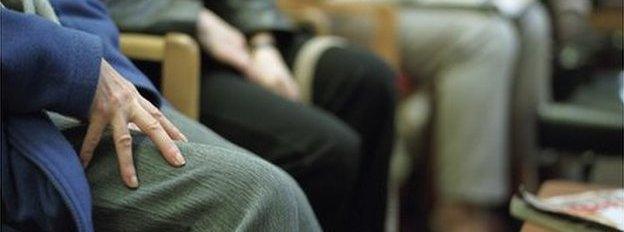
Performance in England has hit an all-time low since weekly monitoring began in 2010.
But this looks like it will just be the start of what promises to be the most difficult winter for the NHS for a generation.
The four-hour target was introduced in 2004 to combat the long waits patients faced for treatment.
Since then hospitals have performed remarkably well.
During winter months it has tended to dip below the target level, but not for long.
That is in stark contrast to Wales and Northern Ireland, which routinely miss their target.
This, however, is completely different. The target has been met only once since August and now performance has dipped below 90%.
The scale of the drop is causing concern not only to the health service, but to the government too with an election just around the corner.

Around the UK
As health is devolved, data is published differently across the UK.
While England publishes weekly data, the others release it monthly or quarterly.
In Wales the data from November shows just 83.8% of patients were seen in time.
Northern Ireland is performing even worse - just over 80% of patients were seen within four hours in November.
Scotland has a slightly tougher waiting time target - 98% of patients should be seen in four hours - but in September 93.5% were.
Comparing the September figures for England and Scotland shows England was performing slightly better in that month.
It means according to latest data all parts of the UK are missing the A&E waiting time target.
Each nation has set aside extra money for winter pressures.
In England a record £700m has been set aside, while earlier this week the Scottish government announced it was increasing its funding by £10m, bringing the total pot to over £28m.
Scottish Health Secretary Shona Robison said: "We know the winter months may be challenging for our health boards."
British Medical Association leader Dr Mark Porter said: "These figures confirm just how much pressure the NHS is under.
"Staff are working flat out but the system is really struggling to cope with the sheer number of patients coming through the door."

How the UK is preparing for winter
In England an extra £700m has been set aside to help the NHS. This is paying for the equivalent of 1,000 extra doctors, 2,000 nurses and 2,000 community staff, including social workers and physios.
Ministers in Scotland have announced a total of £28.2m for the NHS to increase capacity and improve the way patients are discharged during winter.
In Wales the NHS has been given an extra £200m for this year. The money is for the whole health service, but ministers say it will help relieve the pressures in the coming months.
Ministers in Northern Ireland have released an additional £5m for both hospitals and the community, including ambulance liaison officers to speed up handovers between paramedics and A&E teams.

Have you recently visited an A&E unit? Are you an NHS worker? Email your experiences to haveyoursay@bbc.co.uk, external
- Published6 January 2015
- Published12 December 2014
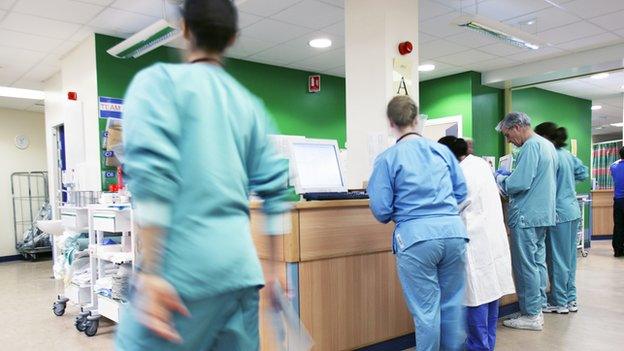
- Published12 December 2014
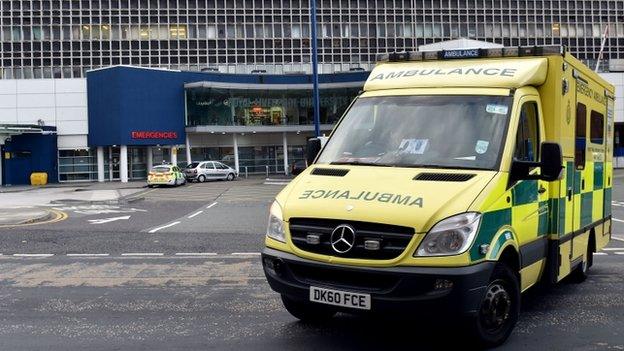
- Published28 November 2014
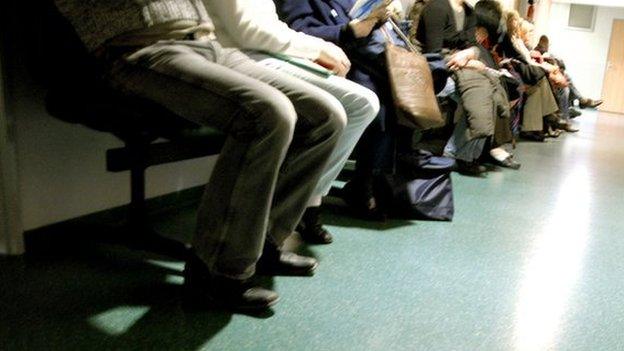
- Published14 November 2014

- Published14 November 2014
- Published21 October 2014

- Published18 June 2014

- Published17 March 2014
